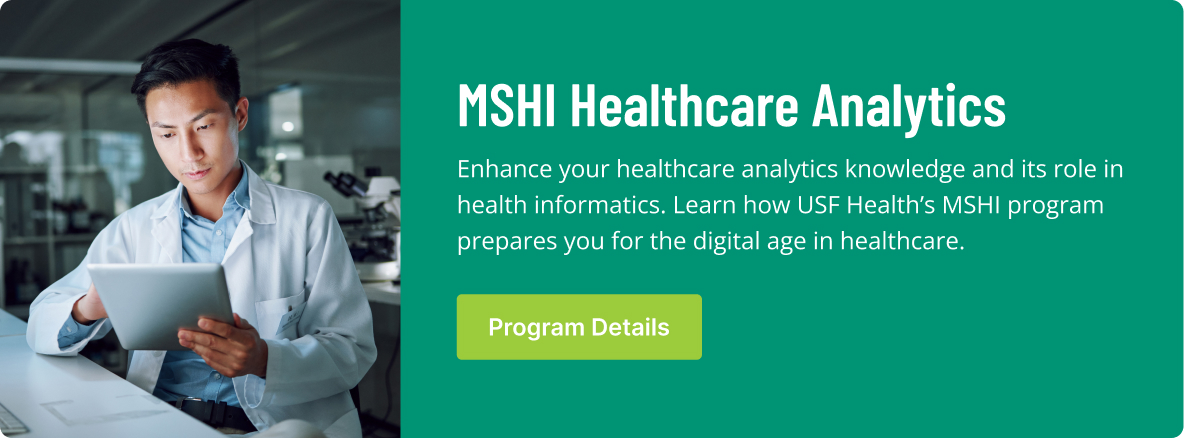Data analytics has become a vital part of operations as major organizations collect and exchange vast quantities of information about people and their activities. Healthcare is among the industries who use data the most, which has led to the development of the field of healthcare analytics.
Not all forms of data analytics are the same. Descriptive analytics, predictive analytics and prescriptive analytics are three distinct types of data analysis that each contribute to the holistic understanding of an organization and predictions for effective decision making.
What is Data Analytics?
Data analytics is the process of collecting and examining data to draw conclusions and make actionable suggestions to stakeholders. In healthcare, analytics often involves examining specific data sets from patient EHRs to answering questions at both the individual and organizational levels. The goal is to draw conclusions from data that can help an organization make better decisions going forward, ultimately improving patient care.
Data analytics can:
- Help determine the actual impact of decisions on patient and consumer behavior and other relevant metrics.
- Confirm preferences for or against certain products or services.
- Provide insight into potential future trends based on existing data.
- Identify areas of strengths and weaknesses within an organization.
What is Descriptive Analytics?
Descriptive analytics is a branch of data analytics that allows users to extract insights from massive databases. Descriptive analytics uses statistics and data mining to analyze historical records and help organizations understand existing patterns and behaviors.
Descriptive analytics can be used to answer questions such as:
- What happened?
- Why did it happen?
- How often did it happen?
The most common example of descriptive analytics would be a statistical report. Any institution that uses data can apply descriptive analytics. In healthcare, descriptive analytics may be applied to patient relationship management, staffing and funding needs, supply chain management, equipment or pharmaceutical sales and more.
While descriptive analytics has many advantages, it also has some limitations. For example, since it only examines historical data, it doesn’t predict future outcomes or identify patterns in real time.
What is Predictive Analytics?
Predictive analytics deals with extracting information from data and using it to predict future trends. Predictive analytics may answer questions like:
- What services or products will be most in-demand?
- Which existing patients or consumers are most likely to go elsewhere?
- What departments in an organization will need additional staffing support?
However, there are still some limitations. Since this type of analysis relies on past data and information, it can’t accurately account for random events or unexpected circumstances. Essentially, predictions are only as good as the available datasets.
What is Prescriptive Analytics?
Prescriptive analytics is an advanced form of data analytics. It involves building complex models that combine multiple data sources and using machine learning to make optimal decisions based on data.
These models are often used to answer questions like:
- Which services or products should we recommend to patients or consumers?
- What type of support is most likely to help a struggling department?
- How do I deliver quality care experience for each patient?
Since this analytical approach predicts future outcomes, it gives organizations the chance to test out different hypothesized scenarios. This predictive element allows for more well-informed decisions by all stakeholders involved.
Should Organizations Move Toward Prescriptive Analytics?
Prescriptive analytics takes real-time data and generates possible outcomes rather than describing what already has occurred or predicting what may occur. The data-informed decision making that prescriptive analytics allows for can be quite valuable to healthcare organizations.
Some ways prescriptive analytics can help organizations include:
- Improving operations and workflows by removing unneeded steps or suggesting more efficient alternatives.
- Preemptively anticipating and accounting for staffing or supply shortages.
- Targeting specific goals or outcomes and having a well-informed, clear plan to achieve them.
Prescriptive analytics can reduce organizational risks by using data to determine the best course of action for a situation. On the opposite side, prescriptive analytics can also identify the riskiest courses of action which are ill-advised for the organization. Prescriptive analytics allow for timely and informed decision making at every level of an organization, so many are moving towards the integration of prescriptive analytics in their operations.
The Role of Prescriptive Analytics in Healthcare
Prescriptive analytics is an especially powerful tool for healthcare organizations. It can help these organizations predict the effectiveness of treatments and the likelihood that a patient will respond well to a given intervention. Some prescriptive analytics models can even prescribe optimal treatment protocols for individual patients, considering their specific characteristics and past behaviors to form a prediction.
Finding professionals who are well-versed in both the intricacies of the healthcare industry and the data portion of healthcare technology and operations can be difficult for employers. USF Health’s 100% online health informatics and healthcare analytics graduate programs provide the essential skills necessary for professionals to meet this need in the workforce.
These CAHIIM accredited degree programs combine real-world situations with research-based best practices, taught by healthcare industry professionals.




